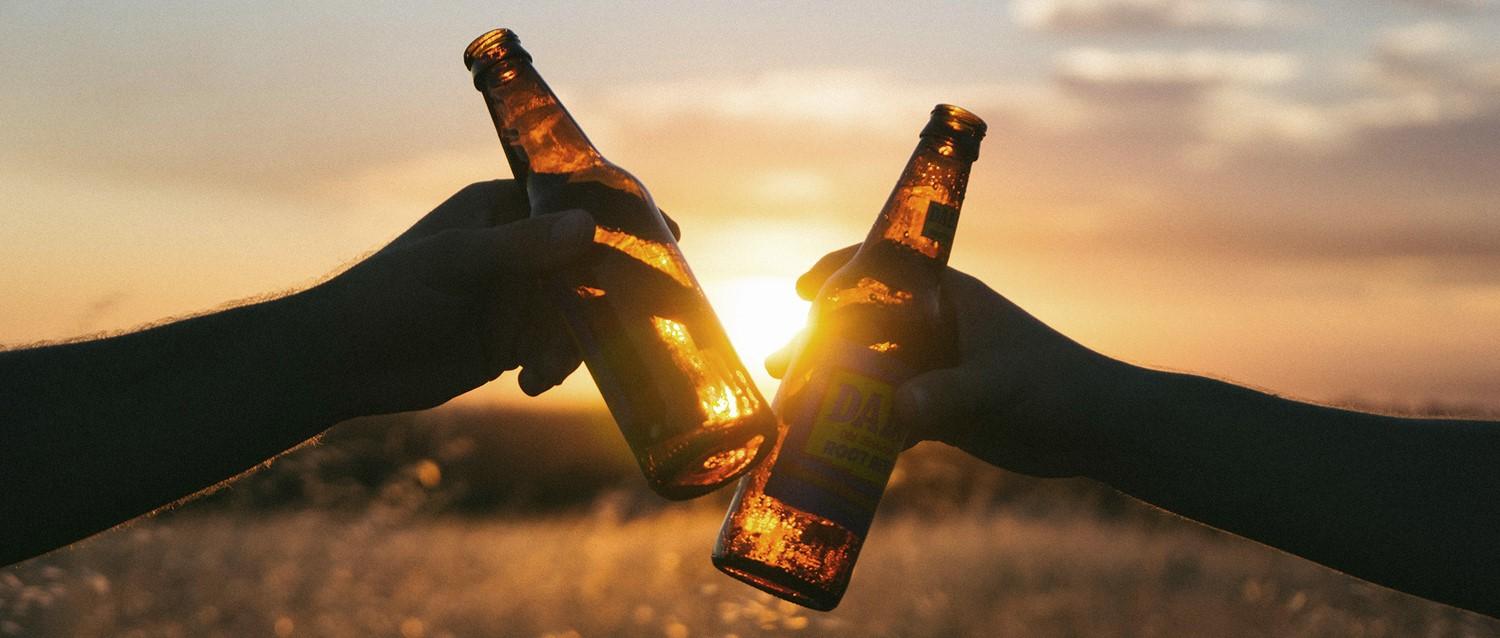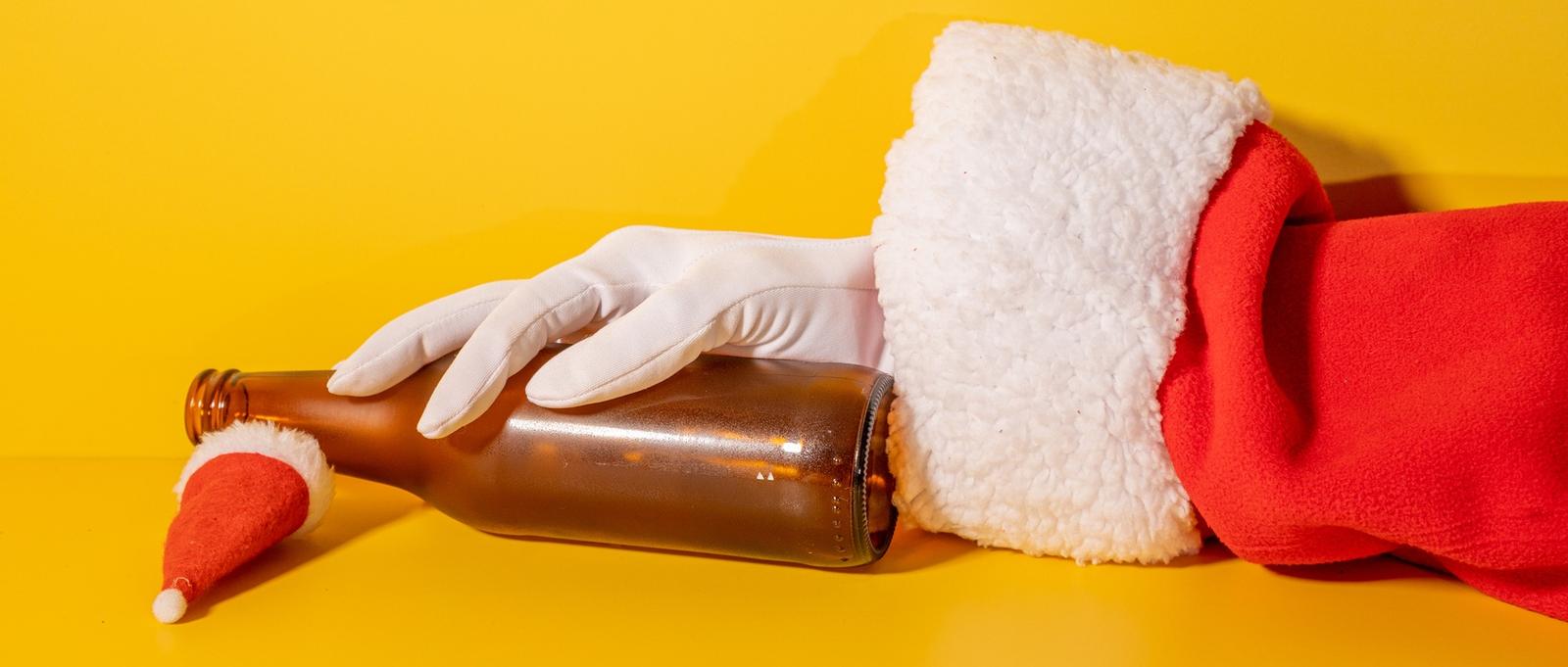
How does alcohol affect your body temperature?
Peer reviewed by Dr Krishna Vakharia, MRCGPLast updated by Victoria RawLast updated 27 May 2024
Meets Patient’s editorial guidelines
- DownloadDownload
- Share
- Language
- Discussion
Common signs of alcohol intoxication might seem familiar to us. But understanding the effects of alcohol on our insides can be a different story. While flushed cheeks, sweating, and hot flushes make us feel warm, our core body temperature is actually dropping. When does this become dangerous and how can we drink safely?
In this article:
Whether it's for social get-togethers, seasonal events or house parties, there's usually some form of alcohol involved. While relaxing with a drink can be fun, it's important to keep track of our intake. However, as long as we're sensible and aware of our units, our chances of developing health issues are low.
Continue reading below
How many units of alcohol should we be drinking per week?
The Department of Health recommends a limit of 14 units per week1. However, according to the NHS, 21% of adults in England regularly drink over this amount each week. Binge drinking is also reported to be a habit of 12% of adults in the UK2.
What does alcohol do to your body?
Binge drinking and drinking over the recommended weekly units is when alcohol consumption can become dangerous. Binge drinking - consuming an excessive amount of alcohol over a short period - can lead to alcohol poisoning. Dangers of alcohol poisoning include:
Severe dehydration.
Seizures.
Comas.
Brain damage.
Death.
A long-term habit of excessive alcohol drinking could also result in serious health complications. These include:
Liver disease.
These are the more extreme consequences of alcohol abuse. But even when we drink it in moderation, alcohol temporarily alters our normal bodily functions. One such physiological change that occurs is to our body temperature. We may all recognise the symptoms, but what is actually going on and when can this become dangerous?
Continue reading below
Why do I feel hot after drinking alcohol?
Your body temperature control (thermoregulation), is affected when you consume alcohol. The alcohol causes unusual thermoregulation activity as it influences the mechanisms your body uses to either warm you up or cool you down.
As you drink alcohol your liver has the job of digesting it. Your liver can only digest so much alcohol at a time and the more you drink the longer it takes for the liver to perform this task. During this time, your liver gives off heat as it works and blood alcohol levels rise.
Over this period the alcohol in your system acts as a vasodilator3. This means that the alcohol widens and relaxes your blood vessels.
As people who flush red when they drink know, alcohol increases blood flow to the skin (vasodilation). "This increases skin temperature and makes you feel warm,” says Professor of human and applied physiology Michael Tipton.
Alcohol sweats
The warm and toasty feeling after drinking alcohol can be accompanied by sweating. This is another mechanism of thermoregulation that under regular circumstances is used by the body to lower its temperature through evaporation.
Some people are more susceptible to flushed, red cheeks than others. For example, this trait is more common in those with East Asian descent, due to a genetically determined deficiency of an enzyme which helps the liver break down alcohol.
According to the National Institute on Alcohol Abuse and Alcoholism4, it's thought that with reduced quantities of this enzyme, certain by-products build up in the body which cause the flushing. The marked vasodilation in people with this genetic trait increases the volume in the blood vessels and reduces blood pressure - making them prone to low blood pressure5 and dizziness.
Hangover symptoms
You may have experienced hot flushes as a symptom of an alcohol hangover. This happens when your blood alcohol concentration levels return to normal. Usually, when you haven't consumed alcohol, these hot flushes are your body's signal to cool down. As a result, during a hangover this can cause abnormal changes to your thermoregulatory mechanisms.
What is really happening to your body temperature when you drink?
All these changes triggered by alcohol create the illusion of warmth. But really, these symptoms are causing your body temperature to drop. Tipton explains:
"By flushing and sweating you are delivering more heat to the skin and thereby increasing heat loss from the 'core' of the body to the environment."
Do hot flushes raise your body temperature?
The short answer is no. This shift in blood supply throughout your body causes you to actually lose heat, but you don't notice because during this process you feel warmer. This is unlikely to cause you any health concerns when you are in a warmer environment. However, in cold settings this can cause problems.
Alcohol induced hypothermia
As the alcohol education charity Drinkaware Trust6 warns, the combination of alcohol and very cold weather can be dangerous and even lethal. This is because your body's core temperature - regulated by the brain - and your body's shell temperature - influenced by the environment - are both under the influence of factors making it cooler.
Tipton describes what happens: "In cool air temperatures, this heat loss can result in falling deep body temperature. In very cold air temperatures or cold water, the powerful cold stimuli at the skin override the alcohol-induced vasodilatation. As a result, blood flow to the skin shuts down, defending deep body temperature."
Excessive drinking combined with the cold can lead to hypothermia, which occurs when your body temperature drops so low that it causes a cardiac arrest. A study7 of hypothermia and alcohol poisoning in adolescents found that in winter 26.6% of the intoxicated subjects experienced mild hypothermia. This was compared to 18.0% in the summer.
For most of us the chances of developing hypothermia are slim as long as we drink sensibly and avoid alcohol-induced bad decisions like going out in freezing weather.
Rough sleeping in extremely low temperatures over winter, combined with prevalent alcohol addiction problems, make the homeless population particularly vulnerable to hypothermia.
Continue reading below
How to drink alcohol safely
To keep health risks from alcohol at a low level, it's important to follow the guidelines. The UK Department of Health's Low Risk Drinking Guidelines advise that it is safest not to drink over 14 units a week1. It is also recommended that you pace drinking alcohol evenly over three days or more. If you're pregnant, you should avoid alcohol altogether.
If you are looking to reduce your alcohol intake, the following methods may help:
Designating alcohol-free days.
Choosing bottles instead of pints, and small glasses instead of large ones.
Tracking units by reading the label.
Adding mixers to make your drinks last longer.
Buying a measure so that you know how much you are drinking.
Drinking a soft drink or a glass of water between alcoholic beverages .
Avoiding salty foods while drinking, as these will make you want to drink more.
Alcohol addiction symptoms
You need to be able to identify the signs of alcohol addiction so that you can ask for help and start recovery. If you are concerned that you have become too dependent on alcohol, consult your doctor. They can discuss the issue with you and arrange appropriate treatment.
Alternatively, there may be alcohol support services in your local area that you can access without a medical referral.
Some warning signs and symptoms of alcohol addiction or dependency include:
Having an overwhelming desire to drink.
Having no interest in previously normal activities.
Needing to drink more in order to achieve the same effects.
Feeling tired, agitated or irritable.
Feeling unable to say no to alcohol.
Becoming secretive or dishonest.
Pursuing the consumption of alcohol to the exclusion of other pleasurable activities.
Continuing to drink despite clear evidence of harmful consequences.
If after stopping alcohol use, you are experiencing any of the below alcohol withdrawal symptoms, you may have alcohol use disorder or alcohol addiction:
Hot flushes ranging from mild to physically dangerous.
Craving alcohol.
The shakes (trembling).
Feeling sick.
Irritability, anxiety, or agitation.
Sweating.
High blood pressure.
Increased heart rate.
Seizures.
If you have been drinking excessively for a long time, it is important to never suddenly stop drinking as this could lead to dangerous alcohol withdrawal symptoms of seizures, coma or even death. For guidance on reducing alcohol intake safely- contact your doctor or alcohol services for advice before you stop.
Further Reading
1. Department of Health and Social Care: Chapter 12: Alcohol
2. NHS: Health Survey for England, 2021 part 1
4. NIH: Alcohol's Effects on Health. Research-based information on drinking and its impact
5. Kawano et al: Acute depressor effect of alcohol in patients with essential hypertension
Patient picks for Alcohol advice

Healthy living
Can mindful drinking improve your mental health?
It's a feeling many of us have experienced after too many drinks the night before: stomach-churning anxiety, tinged with regret and despair. Feeling anxious or down is a common side effect of a hangover, not to mention the headaches, tiredness and digestive problems. But many young people are now shunning alcohol in favour of going teetotal, with campaigns like Dry January reinforcing the idea further. More than a quarter of 16- to 24-year-olds do not drink, compared to a fifth of the broader adult population, in part, due to concerns over their health and finances. And now, some people are practising a new concept called 'mindful drinking'.
by Lydia Smith

Healthy living
How to drink less over Christmas and the New Year
Whether you're going to parties with friends or colleagues, it's easy to overdo it with alcohol over Christmas and the New Year. So how can you manage your drinking throughout the festive period?
by Victoria Raw
Continue reading below
Article history
The information on this page is peer reviewed by qualified clinicians.
Next review due: 27 May 2027
27 May 2024 | Latest version
21 Oct 2021 | Originally published
Authored by:
Amberley Davis

Ask, share, connect.
Browse discussions, ask questions, and share experiences across hundreds of health topics.

Feeling unwell?
Assess your symptoms online for free
Sign up to the Patient newsletter
Your weekly dose of clear, trustworthy health advice - written to help you feel informed, confident and in control.
By subscribing you accept our Privacy Policy. You can unsubscribe at any time. We never sell your data.